#Naomi Mitchison
Explore tagged Tumblr posts
Text
A little book about a girl raised by bears and dragons, written by a woman who lived several Mitfords' worth of adventure during the dawn of modernity.
31 notes
·
View notes
Text

naomi mitchison in her diary re: meeting her in-laws ... real fears
14 notes
·
View notes
Text


vote yes if you have finished the entire book.
vote no if you have not finished the entire book.
(faq · submit a book)
6 notes
·
View notes
Text
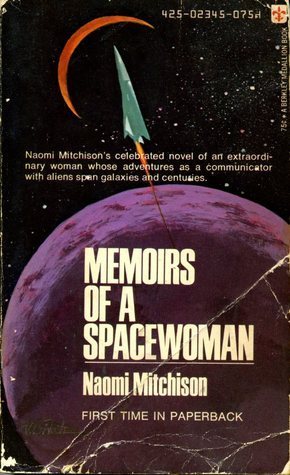
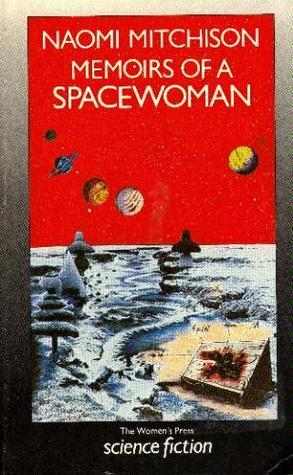
vote YES if you have finished the entire book.
vote NO if you have not finished the entire book.
(faq · submit a book)
8 notes
·
View notes
Text
Classic Fantasy in English
250 years, 69 books, 48 writers
Gulliver's Travels - Jonathan Swift - 1726
Fairy Tales Told for Children - Hans Christian Andersen - 1835-1863 tr. Mrs. H. B. Paull 1867-1872
The Water-Babies - Charles Kingsley - 1863
Alice in Wonderland/Through The Looking Glass - Lewis Carroll - 1865/1871
Mopsa The Fairy - Jean Ingelow - 1869
At the Back of the North Wind, George MacDonald - 1871
The Princess and the Goblin/The Princess and Curdie - George MacDonald - 1872/1883
The Strange Case of Dr Jekyll and Mr Hyde - R. L. Stevenson - 1886
The Happy Prince and Other Stories - Oscar Wilde - 1888
News from Nowhere - William Morris - 1890
The Book of Dragons - E. Nesbit - 1901
The Just So Stories - Rudyard Kipling - 19021
Peter Pan - J. M. Barrie - 1902-1911
The Enchanted Castle - E. Nesbit - 1907
Puck of Pook's Hill/Rewards and Fairies - Rudyard Kipling - 1906/1910
Lud in the Mist - Hope Mirrlees - 1926
The Midnight Folk - John Masefield - 1927
Dr. Dolittle in the Moon - Hugh Lofting - 1928
Patapoufs et Filifers / Fattypuffs and Thinifers - André Maurois - 1930/tr. Rosemary Benet 1940
The 35th of May, or Conrad's Ride to the South Seas - Erich Kästner - 1931, tr. Cyrus Brooks 1934
Jirel of Joiry - C. L. Moore - 1934-1939
The Tale of the Land of Green Ginger - Noel Langley - 1937
My Friend Mr Leakey - J. B. S. Haldane - 1937
The Hobbit/The Lord of the Rings - J. R. R. Tolkien - 1937-1955
Le Petit Prince / The Little Prince - Antoine de Saint-Exupéry 1943 tr Katherine Woods
The Wind on the Moon - Eric Linklater - 1944
Mistress Masham's Repose - T.H. White - 1946
The Little White Horse - Elizabeth Goudge - 1946
Trollkarlens Hatt / Finn Family Moomintroll - Tove Jansson - 1948 tr. Elizabeth Portch 1950
Nineteen Eighty-Four - George Orwell - 1949
Seven Days in New Crete - Robert Graves - 1949
The Borrowers / Afield / Afloat / Aloft / Avenged - Mary Norton - 1952/1955/1959/1961/1982
All You've Ever Wanted / More Than You Bargained For - Joan Aiken - 1953/1955
To the Chapel Perilous - Naomi Mitchison - 1955
Tom's Midnight Garden - Philippa Pearce - 1958
The Lion, the Witch, and the Wardrobe - C. S. Lewis - 1950
The 13 Clocks - James Thurber - 1950
Round the Bend - Neville Shute - 1951
The Armourer's House - Rosemary Sutcliff - 1951
The Once and Future King - T. H. White - 1938-1958
Candy Floss / Impunity Jane / Miss Happiness and Miss Flower - Rumer Godden 1954 / 1960 / 1961
Sword at Sunset - Rosemary Sutcliff - 1963
Book of Heroes - William Mayne - 1966
Tree and Leaf\Smith of Wootton Major - J. R. R. Tolkien - 1945-1967
The Crystal Cave / The Hollow Hills / The Last Enchantment / The Wicked Day - Mary Stewart 1970-1983
Dragonflight - Anne McCaffrey - 1968
A Wizard of Earthsea / The Tombs of Atuan / The Farthest Shore - Ursula K. Le Guin - 1968/1971/1972
Red Moon and Black Mountain - Joy Chant - 1970
Tom Ass or The Second Gift - Ann Lawrence - 1972
The Dark Is Rising/Greenwitch/The Grey King - Susan Cooper - 1973 / 1974 / 1975
#Jonathan Swift#Hans Christian Andersen#Charles Kingsley#Lewis Carroll#Jean Ingelow#George MacDonald#R. L. Stevenson#Oscar Wilde#William Morris#E. Nesbit#Rudyard Kipling#Hope Mirrlees#John Masefield#Hugh Lofting#André Maurois#Erich Kästner#C. L. Moore#Noel Langley#J. B. S. Haldane#J. R. R. Tolkien#Antoine de Saint-Exupéry#Eric Linklater#T.H. White#Elizabeth Goudge#Tove Jansson#George Orwell#Robert Graves#Mary Norton#Joan Aiken#Naomi Mitchison
3 notes
·
View notes
Text
travel light
was listening to one of my fav audiobooks the other day (this is how you lose the time war by amal el-mohtar and max gladstone) and got to the part where blue recommends a book to red
"PS. Should this find you near a library, I recommend Travel Light by Naomi Mitchison. It's the same in all strands in which it exists. It might be a comfort to you on the move--I can tell you're moving a lot right now."
to which red responds "Read the Mitchison. Loved it. (Though that seems too quick a summary--I get what you mean about words, now.) It hit me. Especially the dragons and Odin and the ending. I had a harder time with the Constantinople section--I may be missing some context there, though I can see what place it holds in the book, and the trickery reminds me of pieces of Don Quixote. But the final revelation--about the kings and the dragons--yes. Funny how we always think of knights as fighting dragons, when in fact they work for them.
Garden seems to like roots, and this book roots in rootlessness. Are you a tumbleweed, then? A dandelion seed?
You are yourself, and so remain, as I remain,
Yours,
Red" if i'd meant to look it up before during an earlier reading, it wasn't with dragon age on the brain and i never followed through. but this go-round, because it's dragon age summer and DA has occupied my whole being of late even moreso than usual, my attention was caught by mentions of dragons and trickery. looked the book up later to find out the main character's name is halla. well damn I'm sold now.
anyway i just snagged my copy and am now off to search for clues
#dragon age#travel light#naomi mitchison#this is how you lose the time war#amal el-mohtar#max gladstone#i've connected the two dots#didn't need to include red's closing lines but it gives me gay fuzzies
3 notes
·
View notes
Text
“You will be forever living in yon song. They will make you a clothing of words that are as beautiful as the far great hills of Morvern on a clear day.”
Naomi Mitchison, The Big House
2 notes
·
View notes
Text
TWENTY-FOUR
Smiles in the sunshine and tears in the rain
Still take me back to where my memories remain
Flickering embers grow higher and higher
As they carry me back to the Mull of Kintyre.
PAUL MCCARTNEY & DENNY LAINE (1978)
THE ZOOLOGIST James Wilson stood on a boat not far from here one beautiful summer’s evening in 1841. It was calm. It was still. Lights gleamed along the shore, and there was ‘a peculiar concerto between sea and land’. He jotted: 'A shoal of porpoises was tumbling and blowing in the bay, while the dry monotonous craik craik of the land-rail was as distinctly heard as if we had been anchored in the middle of a clover field.'
Nikki and I are sheltering in the doorway of a disused shop in cold, wet Campbeltown. I’ve an electronic version of Wilson’s A Voyage round the coasts of Scotland and the Isles on my steamed-up phone.
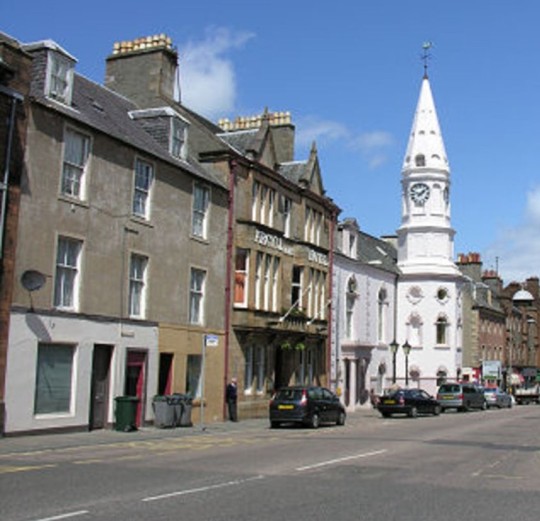
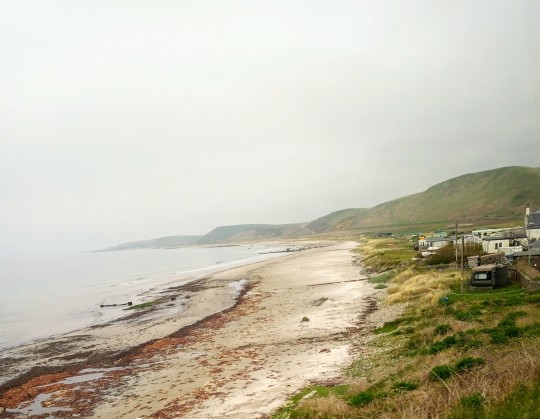
There is a shower of the kind of rain that looks less wet than it turns out to be. There are no seabirds or cetaceans in sight. It’s a damp day at the stub end of April. We are in between showers in Kintyre, that arm of land that reaches down the map to meet the ocean beyond the Mull. I have mislaid my rain-proof trousers. Had my dear father, who died while I was writing this book, been standing beside me, he’d have advised me, as he had done during a storm when I was eight: 'If it disnae kill you, it’ll cure you, boy. Your skin’s waterproof, either way.'
For some folk Kintyre may be the road to nowhere, but Scotland was more or less born here: as dreamy Dál Riata, the kingdom of the Gaels from Antrim, who settled here at the end of the fifth century. John Macculloch wrote, of Campbeltown itself (The Highlands and Western Isles of Scotland, 1824): 'A more picturesque and beautiful situation for a maritime town could not well be found, and, from different points, it presents some fine views; uniting all the confusion of town architecture with the wildness of alpine scenery, the brilliancy of a lake, and the life, and bustle, and variety, incidental to a crowded harbour and pier.'

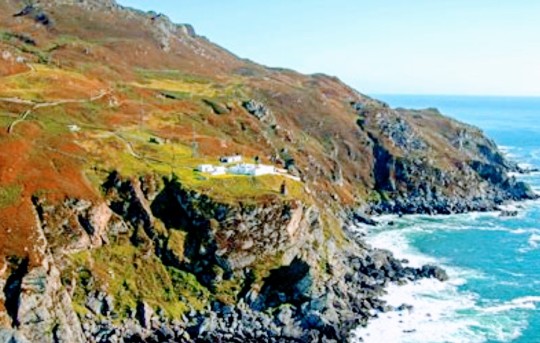
Visitors to Kintyre used to arrive by sea. Most now take that long and winding road from Glasgow to Campbeltown, but the last leg of it, down the A83 from Tarbert, is relatively straight: it edges a raised beach lashed by the Atlantic rollers of the west: a wild seaboard gashed by mini ravines that have no right to be so close to so sandy a littoral. A glacier maybe dumped them one after a jagged other to become rocky outcrops. Shards and larger boulders. Mini-pinnacles. Seabirds of several species perch out on a scar there today and I’ve counted, what, 20 cormorants. A sight to behold, as we unwind from jumping off the bus to help the driver release a lamb trapped in a fence.
Here, from the Glasgow bus, you can, in fair weather, marvel at the distant outline of the Paps of Jura undulating their strangeness out on the horizon. After a while the road turns inwards for a few miles to reach the ‘wee toon’, which is fringed by a sweeping horseshoe bay beneath hill-land. Wee Campbeltown was once the capital of the old Gaelic kingdom. At the end of the 19th century it was a boomtown – one of the richest towns per capita in the UK, and so full of distilleries that they called it Whiskyopolis.
In the game of snakes and ladders that is Scotland’s economy it wasn’t always that way. Campbeltown had been the chief town of the Lords of the Isles, and effectively the capital of Scotland before Edinburgh was thought of, although Pennant observed in 1772 that it had risen in less than 30 years from ‘a petty fishing town to its present flourishing state’:
'About the year 1744 it had only two or three small vessels belonging to the port: at present there are seventy-eight sail, from twenty to eighty tons burthen, all built for, and employed in, the herring fishery ; and about eight hundred sailors are employed to man them. This town in fact was created by the fishery.' (A Tour in Scotland, and Voyage to the Hebrides)
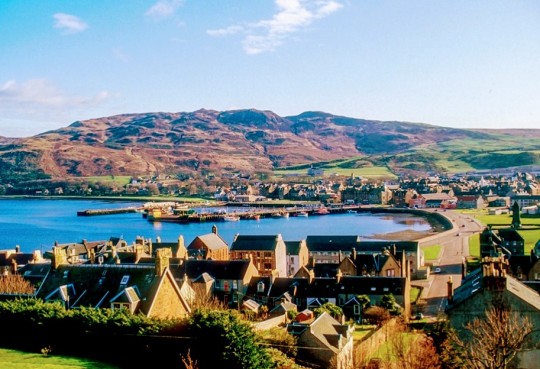

By the time the Rev. Daniel Kelly penned his entry for the New Statistical Account of Scotland in 1843, 500 families fished here but he stressed that ‘the great staple commodity of this place is the distillation of malt whisky’. There were then 25 distilleries, 76 pubs, and an Excise Office that employed 50 people.
The deep harbour was ideal for whisky to be steamed out to markets in the UK and America. Whisky tycoons built villas as grand as any erected by shipping magnates elsewhere. But the distilling industry was ultimately a victim of its success. The demand for liquor was so great that the distilleries concentrated on quantity rather than quality. The killer blow was a series of rises in spirit duties. When the 1911 census revealed an eight per cent drop in population over the past 10 years, the Argyllshire Herald declared:
'The removal from town and district of the best and most virile of our youth continues. There is but one way to stem the tide; that is, by the promotion of some new local industries.
'It remains for somebody to take the initiative, to devise new industries and so resuscitate the trade of the town, otherwise the decline will certainly continue.'
The paper noted that 37 people were emigrating every week, mainly to Canada. The distilleries began to close. There are now only three – in a town that was identified in 2013 as one of the most vulnerable in Scotland, and one of the most remote in the UK. Fuel poverty rates were nearly double the national average then. Professor Cliff Hague, chairman of the Built Environment Scotland, stated in a report: 'Like so many small towns, Campbeltown has been the plaything of forces beyond its own control. Its traditional industries – whisky, shipbuilding, fishing, forestry and tourism – have all experienced restructuring, and the same is true for agriculture which was once the mainstay of the surrounding area.'
There are encouraging signs. Glen Scotia Distillery’s 25-year-old malt has been crowned the world’s best. In the 2021 SURF awards for best practice in regeneration, Campbeltown was judged to be ‘Scotland’s most improved place’ (As many as 40 industrial buildings had received investment that totalled £13 million).
In 2023 plans were lodged for a ‘net zero’ distillery in the erstwhile whisky capital. The Brave New Spirits brand will be distilled at Witchburn Distillery in the former RAF Machrihanish airbase, which the community bought for £1. Their target is two million litres of alcohol per year, powered by 100% renewable energy and heat and energy recovery systems. The former NATO base operated as an airfield for nuclear-armed V-Bombers, for maritime aircraft hunting Russian submarines in the North Atlantic, and during the testing of Concorde.
The local populace, moreover, successfully fought plans to convert Scotland’s oldest atmospheric cinema, Campbeltown Picture House, into flats. It opened its doors the year before a young Charlie Chaplin signed for Pinewood Studios. It is still showing flicks.
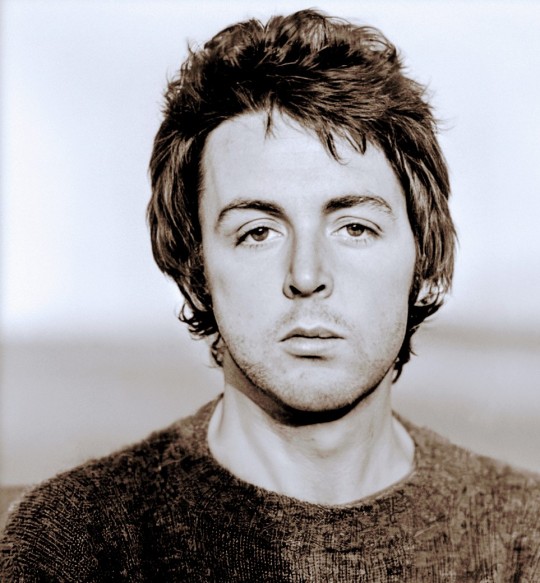
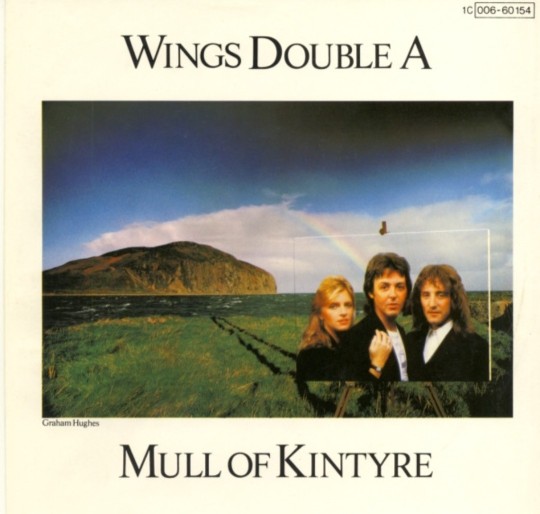
Paul McCartney’s association with Kintyre is well documented. In 1966 he asked his accountant to find him a hideaway from the world of autograph-hunters and Beatlemania. He came up with High Park, an isolated farm on the moors near the Mull of Kintyre, which became the subject of one of the best-selling songs of all time in Britain. Very few people visited the Beatle in his far-flung bolthole. But Peter Brown, who was best man at John Lennon’s wedding, revealed in his biography of The Beatles, The Love You Make (2002):
'Paul summoned Alistair [Taylor, his office manager] to High Park so that he could pay a visit to the local pharmacy for him. According to Alistair, Paul had the crabs and needed a pesticide to shampoo with.
'Being Paul McCartney, the neighbourhood celebrity, Paul was too embarrassed to ask the pharmacist in the small town for the pesticide himself, so he sent Alistair. There was also a sense of urgency to this mission, lest Paul give the tiny parasites to Jane [Asher], who would most certainly realize he had been unfaithful to her.
'The town pharmacist was baffled by Alistair’s request. He had nothing for that purpose other than "sheep dip", which was used to delouse cattle. Paul presumably made do with that.'
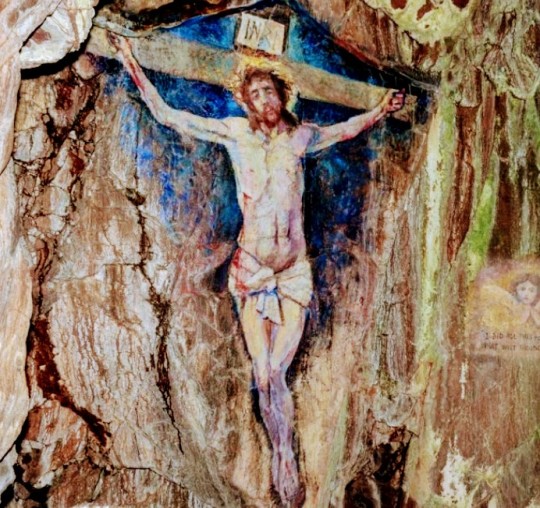
In August, 1887 an unnamed boater rowed ashore in Campbeltown loch to stretch his legs. He wandered into one of the seven caves that notch the south of Davaar island, struck a match to light his pipe – and fainted. The following day hundreds of townspeople ran along the shingle causeway to the island brandishing byre lamps and candles. There in the cave was a life-size mural of Christ on the Cross. The Campbeltown Courier informed its readers:
'Nothing could be more suitable for the contemplation of such a subject than the semi-darkness and rocky grandeur of the large cavern in which the picture is placed.'
An embarrassed local art teacher, Archibald Mackinnon, owned up to being the creator of the fresco.
Locals said Mackinnon, who attached a brush to his walking stick to paint the high features in the cave, fearing the consequences of having used the school’s raw materials to paint the mural, did a moonlight flit soon after press coverage. He turned up in Grantham, where he became an itinerant artist. There are reports that he used hair from his nagging wife’s head to make brushes. Journalists reported his subsequent return to touch the mural up in 1934 – a visit that featured in cinema newsreels. He died the following year, aged 85.
Davaar’s second claim to fame is that the island appears on the Mull of Kintyre album cover, and many latter-day seekers of weirdness visit Davaar, which is accessible along a shingle causeway at low tide. The walk takes about 40 minutes. The island, home to peregrine falcons, dolphins, basking sharks, otters and seals, is privately owned and is part of an organic working farm with holiday cottages. One pilgrim visited in 2006 with a can of red spray paint and stencilled an image of the revolutionary Ché Guevara over the painting of Christ. His identity remains a mystery, but his work was short-lived.
Along the jagged shore opposite Davaar, ‘coasters’ used to roam and squat, away from it all. Jamie ‘Loafs’ Moran, Jock Smith, and Teddy Lafferty often crashed out in a written-off ambulance; and the four Morrans brothers, Joe, Dan, Mickey and Archie, used to sleep in a converted Co-op grocery van. In search of worldly contentment they wandered through land that featured evocative names: Ru Stafnish, Johnston’s Point, Second Waters, Polliwilline Bay, Gartnagerach, and a hill called The Bastard. Journalist Freddy Gillies told the Coast Scottish heritage website: 'To aver that the coasters "roughed it"would be an understatement, but they were a breed set apart who found true happiness during their forays, either alone with their thoughts or in company, particularly in the surroundings of the Learside’s coarse grass and pebble-strewn beaches.
'Sustenance came in the form of dry or tinned stores, occasionally supplemented by rabbit stew or "wilk bree", a thin soup made from periwinkles. Tea, naturally, was taken regularly, as were certain stronger brews.'
For holidaying motorists a 66-mile circular road trip, Kintyre 66, was launched in 2021. From Campbeltown it snakes its scenic way up the east coast via the B842 to Skipness and Claonaig, one of the ferry points to Arran. On its way up the Kilbrannan Sound the route doesn’t veer too far from the coast. There are some stunning views of the Arran skyline from this narrow highway. The road is a single-track one for its last 18 miles.
En route, eight miles north of Campbeltown, lies Saddell Bay, along which a pipe band marched in a memorable video that promoted Wings’s hit single.
Kintyre, of course, has a long history of music-making, on top of McCartney and the ‘Campbeltown Loch I wish you were whisky’ that Andy Stewart once belted out. From his home in the south of England the Rev. Edward Bradley visited Kintyre most summers and he wrote books about its folklore, under the pseudonym, Cuthbert Bede. One of them was Argyll’s Highlands or MacCailein Mor and the Lords of Lorne, published posthumously in 1902, three decades after his research. In the preface John Mackay, the editor of Celtic Monthly, argued: 'It has been left to "outsiders" to produce the best books on Kintyre. Cuthbert Bede ….. has, by implication, shown what a native might do, if he only took the trouble to even note down the ceilidh stories which he heard told round the winter fire.'
Bede wrote warmly of pedlars, vagrants and assorted travellers doing their bit to keep the old Gaelic tales going by narrating them or singing them in the vernacular:
'The shining rafters of the peat-reeked roofs would vibrate to the reels and jigs and strathspeys danced by the barefooted lads and lassies on the earthen floor to the inspiring music that the beggar with the Jew’s harp blew from his pipes, or scraped out of his fiddle, or breathed from his Lochaber trumps.
“Then, tired from jigging, they would gather around the fire and listen to the beggar recite the mystical poems of Ossian. The beggar would relate wild legends and thrill them with stories of ghosts and warlocks and brownies and water-kelpies, told with dramatic power and an actor’s art.'
Bede added: 'Such wanderers as these were wondrous popular in the Western Highlands and Islands, and nowhere more so than in Cantire, where, at its veritable Land’s-end, the Mull was more thickly populated than it is in these sheep-farming days.'
A lady in white and a sinister monk are the resident ghosts of Saddell Castle near the aforementioned bay of the same name. Bede observed in the 1870s that it was one of only two castles in Kintyre in a reasonable state of repair, the other being Skipness further up the peninsula. In 1976, the Landmark Trust restored it to its former glory.
After a basking shark made a boat capsize in the Kilbrannon Sound in 1937 – killing three people – a shark processing factory was established at Carradale almost in revenge. The oil was used for Tilley lamps and candles.
A piece in The Scotsman in June 1939 tells of crowds gathering on Carradale Pier to watch sharks being harpooned. As soon as the harpoon was fired, the sharks dived and disappeared, but one was hit and it ‘made off at racing speed towards the Kilbrannan Sound but whirled back in its tracks and went round and round in the bay in a series of great circles’ towing the boat with it.
Not far away, in 2022, an Israeli arms company, Elbit Systems, appeared overnight in a car park nearby to erect masts! Niall Macalister Hall, who owns the Torrisdale Castle estate, told the Daily Record:
'They were pretty arrogant and said they didn’t need permission to do anything. They design and operate drones and they are into weapons systems, so we’re naturally wanting to know what they are up to.'
Elbit Systems UK employs 600 people over 13 sites, many of which have been targeted by protestors from the Palestine Action group.
The novelist and socialist activist Naomi Mitchison lived in Carradale for many years, and Flora Drummond, the Arran-born suffragette ‘general’, who was one of the pall bearers at Emiline Pankhurst’s funeral, lived her final years at Carradale, almost opposite her childhood home in Arran. She is buried in the village cemetery. Drummond was jailed nine times and undertook hunger strikes to advance the cause.
Possibly the highlight of the eastern flank of Kintyre is Skipness. Skipness estate was once run by stereotypical gung-ho gentry. The shooting extended over 20,000 acres, and visitors could bag grouse, black game, partridges, hares, rabbits, wood-cock, snipe, plover, pheasants and roebuck.
Colonel Walter Campbell, the so-called ‘Old Forest Ranger’, owned Skipness when he wrote his Indian Journal in 1864. Campbell revealed that when he returned from the colonies, his tutor, the foxhunter Alan McIntyre was still creeping about with his long-barrelled gun under his arm in his 70s. Campbell reminisced:
'It was really affecting to see the poor old man with tears of joy pouring over his furrowed cheeks, as I displayed to him my Indian trophies of the chase, and reminded him that, but for his good training I should never have earned them.
'He patted me on the back, calling me "the calf of his heart", the pride of his old age, and would sit for hours gazing at the heads and skins which decorated the hall, as an old Indian chief might do upon the scalps taken in war by his only son, chanting the while a song of triumph which he had composed on my return from "the far-off hunting-grounds near the rising sun", where I had slain great wild cats larger and stronger than a Highland bull.'
In his 1853 book, The Old Forest Ranger: Or, Wild Sports Of India On The Neilgherry Hills, In The Jungles, And On The Plains, he had written longingly about spearing wild boar watched by ‘vulgar Hindoos’. That’s probably enough of Campbell.
#campbeltown#davaar#mull of kintyre#skipness#kintyre#whisky#distilleries#paul mccartney#saddell#naomi mitchison#suffragette
0 notes
Text
As literary critic Susan Squier emphasises in a recent study, all five were deeply involved in an intense debate about reproduction which took in sexuality, contraception, motherhood and eugenics.
"Frankenstein's Footsteps: Science, Genetics and Popular Culture" - Jon Turney
#book quote#frankenstein's footsteps#jon turney#nonfiction#literary criticism#susan squier#emphasis#charlotte haldane#naomi mitchison#julian huxley#aldous huxley#debate#sexuality#contraception#motherhood#eugenics#jbs haldane
0 notes
Text
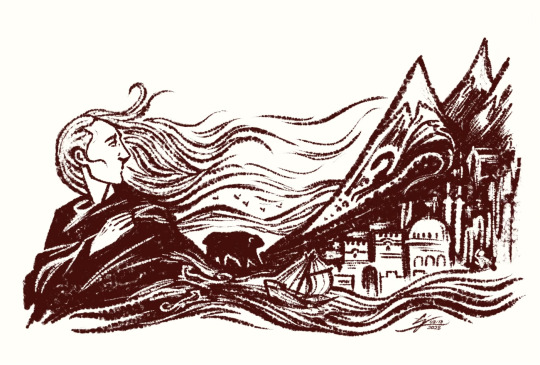
The love of the Wanderer is to wanderers.
#em draws stuff#travel light#this image has been about a year in the making (I wanted to draw it when I first read it but I only got to it now)#my thoughts on travel light are. well they are this image primarily.#been a while and a while since I drew in this style and it feels GOOD to be doing it again!!#wish I'd figured out a way to fit steinvor into the composition but it was a hard squish even to include tarkan der (and he's very tiny)#the way I've done the mountains are purposefully referencing one of the earlier covers of the hobbit as I love jirt's painting style#and it seemed apt for various things about the way travel light exists and the kinds of things it has to say#it is right on the edge of where legend meets life when it comes to depicting early medieval europe and it's. well. read it actually.#book that makes you want to listen to 'to holmgard and beyond' by turisas except exactly backwards#(in the varangian way they are going the other direction and also they are much more (to put it as halla would) dragonish about it)#song I first heard in the context of an absolutely wild 8tracks playlist in 2015 which changed my music taste forever. anyway.#really I must read more naomi mitchison except that no library in the entire state of california appears to have a copy of the big house :/#anyway anyway. if I ever get my own copy of this book I Will be rebinding it to have this for a cover I like it so very much
61 notes
·
View notes
Text
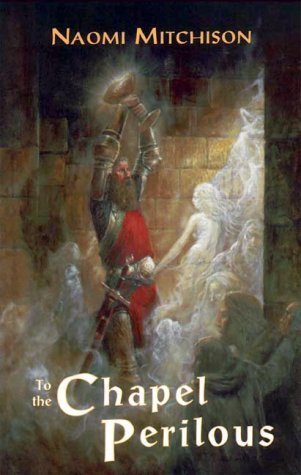
vote YES if you have finished the entire book.
vote NO if you have not finished the entire book.
(faq · submit a book)
10 notes
·
View notes
Text

vote yes if you have finished the entire book.
vote no if you have not finished the entire book.
(faq · submit a book)
1 note
·
View note
Text

all right auden this IS an extremely funny way to describe your kinsey 6 status
(from a letter to Naomi Mitchison quoted in her memoir 'You May Well Ask')
#w.h. auden#from context it seems like she was trying to convince him to get fig-leaf-het-married-of-convenience at the time asdjfkl;sjdakl
409 notes
·
View notes
